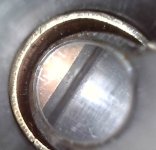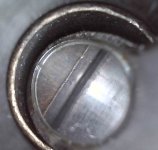Hello all.
When I go to seat bullets I’m noticing a substantial difference in the amount of force required to seat them. I measured all the case necks and they’re all the same. I’m using forster collet dies with a rock chucker press. I know the best way is to use an electronic press with expanding mandrel dies, but that’s not going to happen anytime soon. I lube all my cases necks with imperial dry neck lube, and am wondering if varying amounts of that can make a difference in the amount of force required to seat the bullets, or if it isn’t a factor at all. I know one of the keys to accuracy is consistent neck tension, and I’m afraid that’s where my hang up is with extreme accuracy. I’m currently shooting just under 1 MOA, but know that several of my guns are capable of more than that.
When I go to seat bullets I’m noticing a substantial difference in the amount of force required to seat them. I measured all the case necks and they’re all the same. I’m using forster collet dies with a rock chucker press. I know the best way is to use an electronic press with expanding mandrel dies, but that’s not going to happen anytime soon. I lube all my cases necks with imperial dry neck lube, and am wondering if varying amounts of that can make a difference in the amount of force required to seat the bullets, or if it isn’t a factor at all. I know one of the keys to accuracy is consistent neck tension, and I’m afraid that’s where my hang up is with extreme accuracy. I’m currently shooting just under 1 MOA, but know that several of my guns are capable of more than that.



